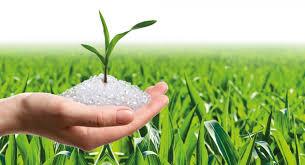The global market for Bioplastics & Biopolymers is anticipated to expand from USD 15.3 Billion in 2024 to USD 45.2 Billion by 2029, with a CAGR of 24.2% during 2024-2029. In the Study you will find new evolving bioplastics & biopolymers market trends , Drivers, Restraints, Opportunities generated by targeting market associated stakeholders. Key drivers include increased bioplastics usage in packaging, stringent waste management regulations in Europe, government emphasis on green procurement policies, prioritization of bio-based content, and consumer preference for eco-friendly plastic products.
Download PDF Brochure: https://www.marketsandmarkets.com/pdfdownloadNew.asp?id=88795240
Leading companies in the bioplastics & biopolymers market include NatureWorks LLC, Braskem, BASF SE, Total Energies Corbion, Versalis SPA, Biome Bioplastics Limited, Mitsubishi Chemical Group Corporation, Biotec Biologische Naturverpackungen GmbH & Co., Plantic Technologies Limited, and Toray Industries, Inc . These players have pursued growth strategies such as acquisitions, mergers, investments, and expansions over the past five years to enhance competitiveness and expand their customer base globally.
NatureWorks LLC, a major biopolymers supplier, is co-owned by Cargill and PTT Global Chemical. The company specializes in producing biopolymers from renewable sources such as corn, starch, and vegetable oils. Its product range includes series for extrusion/thermoforming, injection molding, films & cards, fibers & nonwovens, and 3D printing. NatureWorks serves various industries such as beauty & household, construction, food service, electronics, medical, and hygiene across North America, Europe, Japan, and Asia-Pacific. It operates manufacturing facilities in Blair, Nebraska, with a capacity of 150,000 metric tons of ingeo biopolymer.
Get Sample Copy of this Report: https://www.marketsandmarkets.com/requestsampleNew.asp?id=88795240
BASF SE, a prominent chemical company, operates across six business segments: chemicals, materials, industrial solutions, surface technologies, nutrition & care, and agricultural solutions. It offers biodegradable plastics through its materials segment and conducts research in process research & chemical engineering, advanced materials & systems research, and bioscience research. Serving over 90,000 customers globally, BASF holds a top-three market position in approximately 30% of its active business areas. With six Verbund sites and 232 additional production sites worldwide, the company operates extensively across Europe, Asia Pacific, North America, South America, Central America, and the Middle East & Africa.
Another significant player in the Bioplastics & Biopolymers sector is TotalEnergies Corbion. TotalEnergies Corbion, established in 2017 as a joint venture between Total Energies and Corbion, holds a prominent position in the PLA and lactide monomers market globally. Their Luminy PLA portfolio encompasses products across four categories suitable for various conversion technologies. They provide a range of solutions to sectors such as packaging, automotive, consumer goods, and textiles. Operating a PLA production facility capable of producing 75,000 tons per year in Rayong, Thailand, the company has a presence in North America, Asia-Pacific, and Europe.
Drivers, Opportunities and Challenges in Digital Printing Packaging Market:
- Drivers: Government focuses on green procurement policies & regulations
- Restraint: Higher prices of biodegradable plastics than that of its alternatives
- Opportunity: High potential in emerging economies
- Challenge: Fluctuating oil prices create volatility in demand for biodegradable plastics
Inquire Before Buying: https://www.marketsandmarkets.com/Enquiry_Before_BuyingNew.asp?id=88795240
Key Findings of the Study:
- PBAT is estimated to be the second largest market in the global bioplastics & biopolymers market, by product type, during the forecast period, by Value.
- Sugarcane/Sugar beet to be the largest market in the global bioplastics & biopolymers market during 2024 to 2029, by value.
- Consumer goods is estimated to be the second-largest end-use industry, in 2024.
- Europe accounted for third largest region, by value, during the forecast period.

